The message earlier this week from the power company was vague and a bit scary -- the electricity was likely to be turned off due to harsh wind conditions. Please be prepared to be without power for up to 5 days. Not knowing when that was going to come down, I went grocery shopping and got the Instant Pot to crank out something warming and fun -- Sichuan spicy beef noodle soup.
My husband had kept mentioning a Whole Foods Prime member deal on short ribs so I bought a couple of pounds to make a cozy Asian noodle soup that would keep us entertained for as long as the power outage would last.
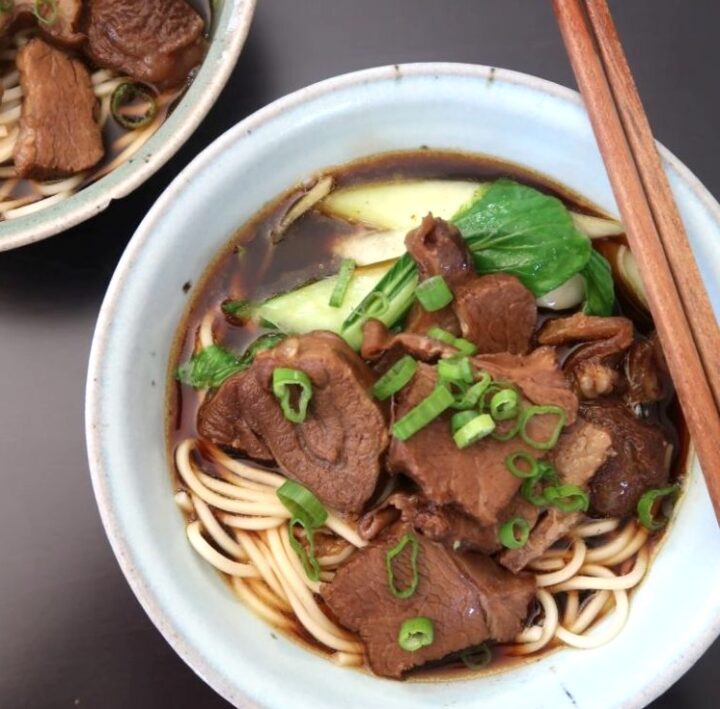
This Sichuan spicy beef noodle soup recipe (Si Chuan niu rou mian) was informed and inspired by one in Florence Lin's Complete Book of Chinese Noodles, Dumplings and Breads. The book is out of print and is splendid. If you come across a copy, grab it!
Lin’s recipe, written in the 1980s, was good but the initial pass in the Instant Pot was a bit lacking in depth. Her ingredients were different back then. So I tweaked things (it’s fast in a pressure cooker!) until I got the recipe you see below. The beauty of using a pressure cooker such as the Instant Pot is that instead of spending 2 to 3 hours, you can make Sichuan spicy beef noodle soup in about 1 hour for a midweek meal -- or a looming power outage.
What kind of beef to use?
Short ribs have a nice balance of meat, fat, and bones, which all lend flavor to the broth. When I experimented with my tweaks, I added a 1-inch thick slab of cross-cut beef shank, which contributed richness along with chewy texture -- prized in Asian noodle soups like this one and pho. But you can also opt for a chuck roast, cut into big chunks about the size of a short rib!
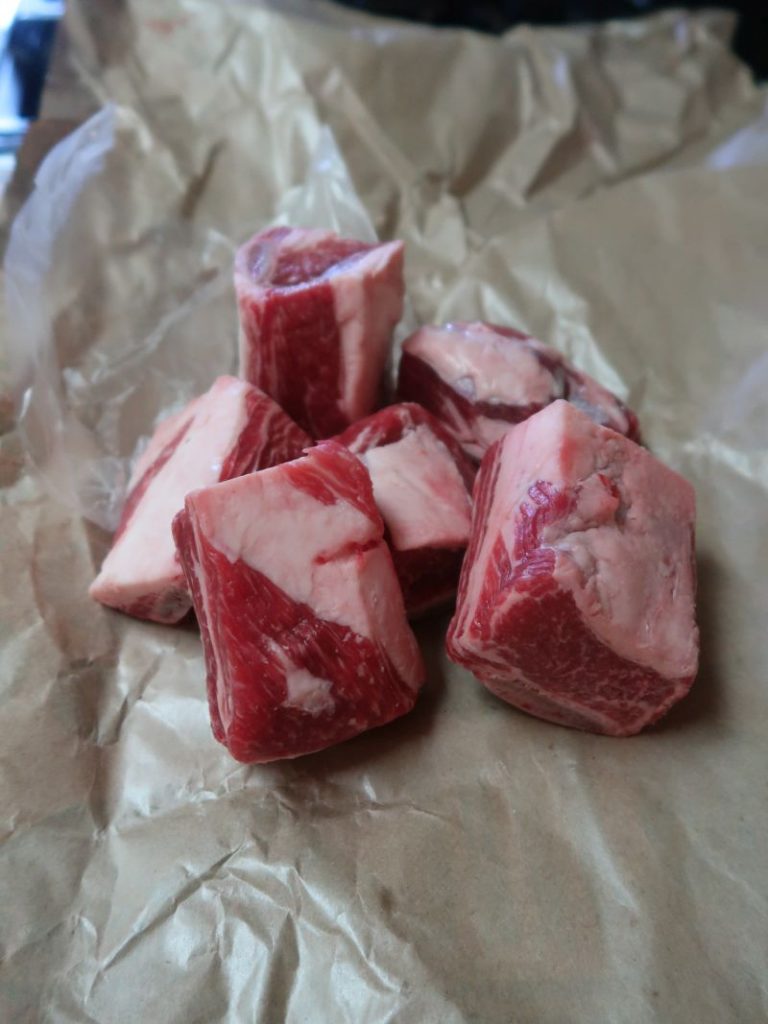
Some people prefer all beef shank but while the meat is wonderfully gelatinous, it’s not fatty or beefy. Because of the way short ribs are cut, they yield nice chunky pieces that you can easily slice later on for the bowls!
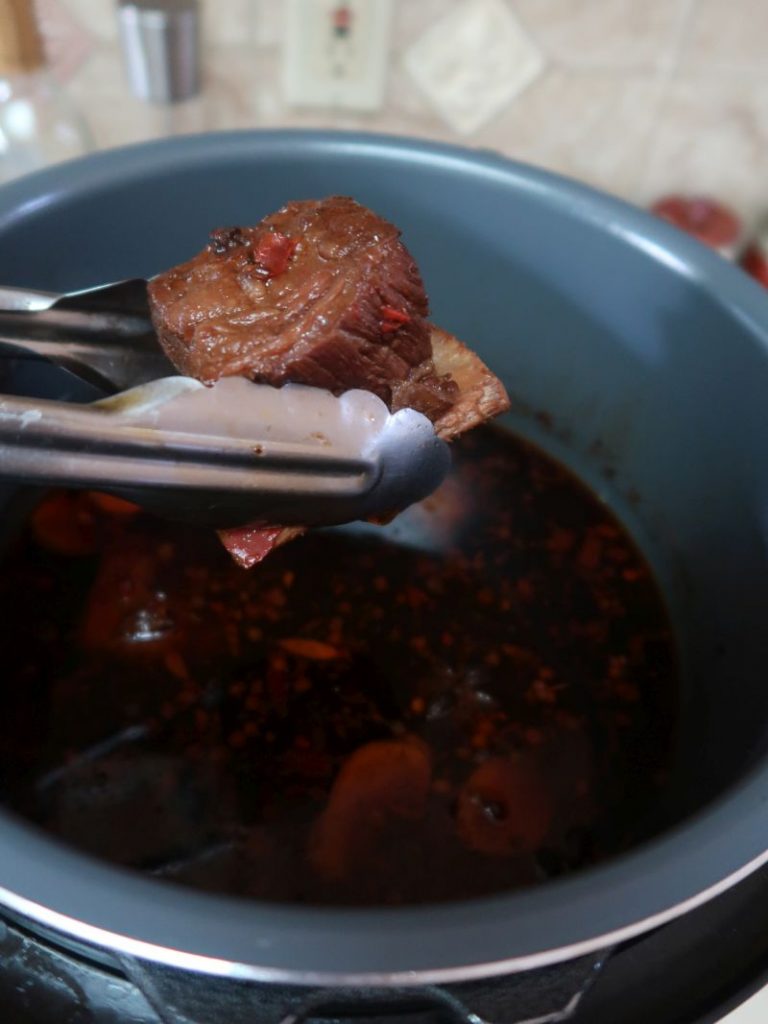
Shank is sold at many butcher counters and some supermarkets. Employ two kinds of beef, if you can. If short ribs are unavailable, use a chuck roast or brisket cut into chunks that are roughly 2 by 3 inches big.
Sichuan Chile Bean Sauce/Paste
Unless your regular supermarket is well stocked with Asian condiments, you need to go to an Asian market for the chile bean sauce. Doubanjiang (the Mandarin term for the ingredient) is what’s used in mapo tofu and some other signature spicy dishes from the province. It’s spicy, salty and savory. It’s very exciting to eat. Fermented fava beans (broad beans) are what’s used along with lots of chiles. It can be a thick sauce or pastelike.
I have two brands in my fridge -- milder-tasting Lee Kum Kee and the other one from Sichuan, is darker, more lusty and earthy. Both are standards at Chinese markets. Buy at the upper price level.
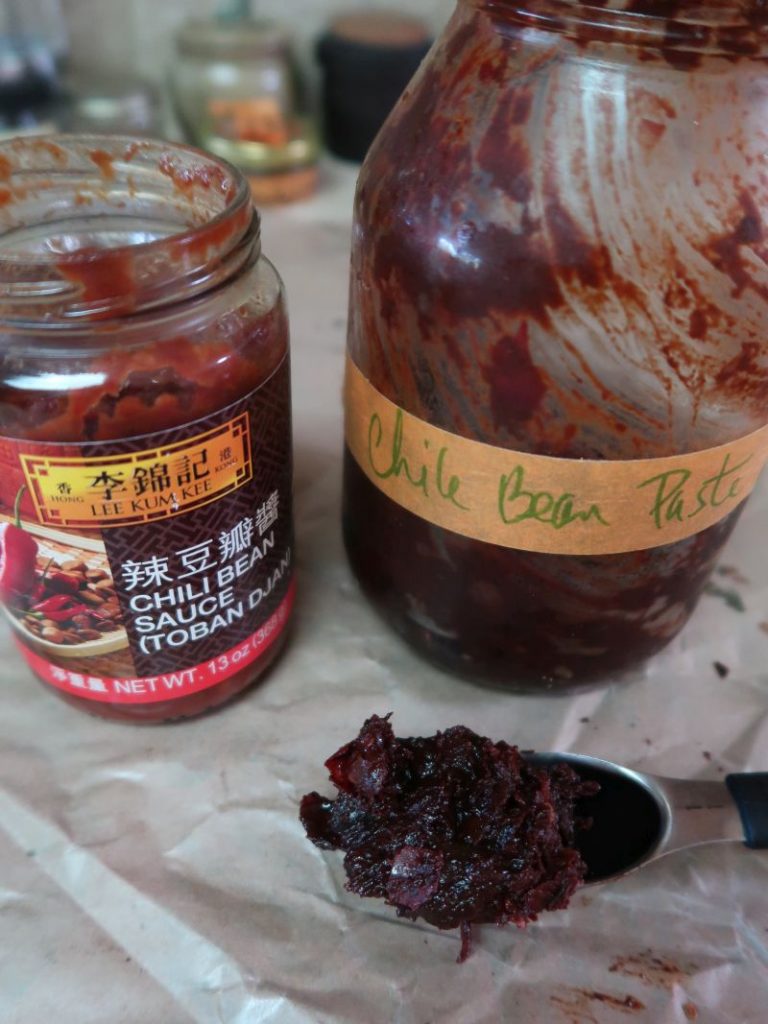
The stuff in the jar originally came in squishy packaging. I love it because it's from Sichuan -- labeled as “Pixian Broad Bean Paste” to denote authenticity, is packaged in paper with twine tied around it. No, it is NOT gluten-free.
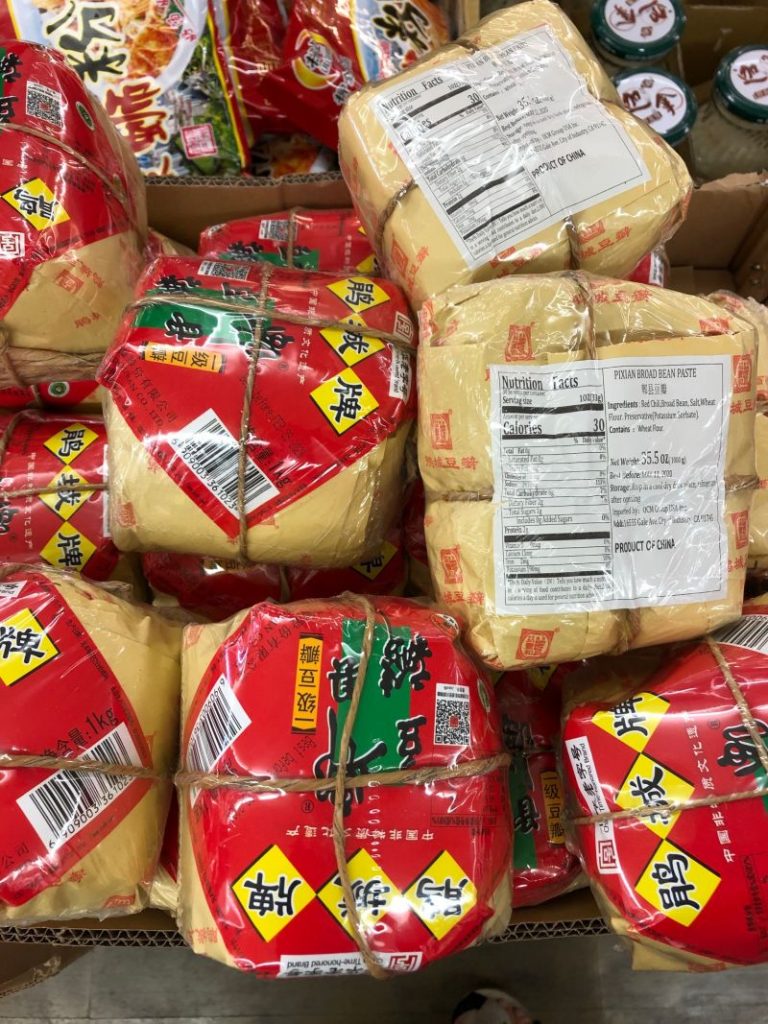
The packaging looks funky but know that inside, the condiment is in sealed plastic. Share it with friends if it’s too much for you. Stored in a jar, it keeps indefinitely in the fridge. More on Sichuan chile bean sauce/paste in this article.
Shaoxing rice wine and dark soy sauce
And while you’re at the Chinese market, these are my current go-to brands for rice wine and dark soy.
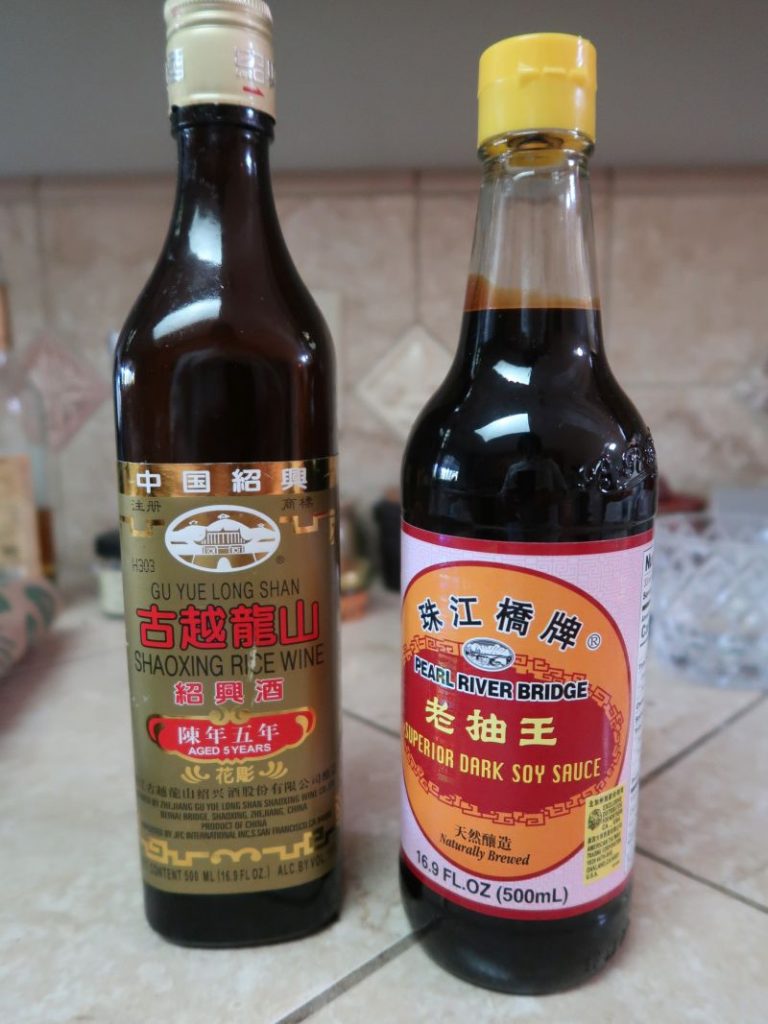
I’ve long advocated for Pagoda brand of Shaoxing but this brand, which costs $6 or 7, is aged longer and more sophisticated tasting.
The dark soy sauce by Pearl River Bridge is a standard and great for imparting reddish brown color to foods.
Spices and noodles
In Lin’s original recipe, the Sichuan peppercorns and star anise were optional. They were likely hard to find when the book was published in 1986. For more complex flavor, use them. They’re sold in the spice section of most supermarkets nowadays. You can certainly find them at Chinese and Vietnamese markets. If you need a Sichuan peppercorn primer, check out this post.
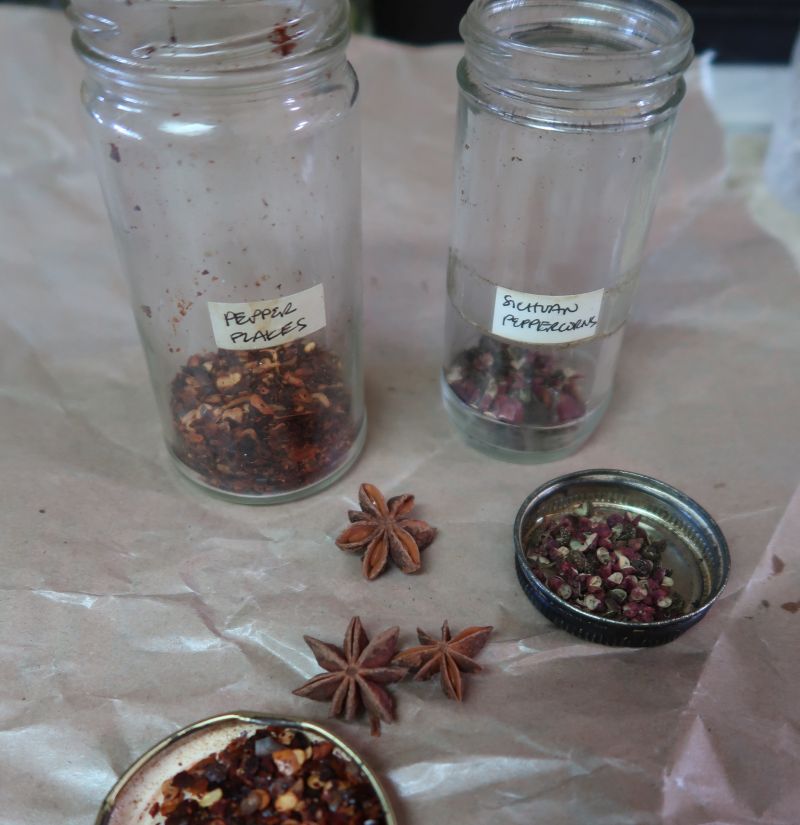
I didn’t use fancy noodles. I had some Chinese egg noodles by Rose Brand purchased from WinCo market. Also sold at Amazon, they’re made in Washington State and are very good in terms of their chewy-tender quality. If you’re low-carbing it, use 25 percent less noodles and add extra bok choi.
If you enjoy the soup, freeze 1 cup of broth to add to your next batch. Lin wrote in her book that it adds extra goodness, a secret she learned from the Chengdu chef who inspired her recipe.
As the weather cools down, you can put this Sichuan spicy beef noodle soup together in no time! (Don’t wait for threatening messages from the power company.)
And yes, there are instructions for a regular pot and stovetop pressure cooker. Cook on and slurp up!
Note that Amazon links on this website are affiliate links, which earn me a small fee that I then reinvest in VWK!
Helpful Asian ingredient tips
Instant Pot Sichuan Spicy Beef Noodle Soup
Equipment
- instant pot
- pressure cooker
Ingredients
- 2 large green onions
- 2- inch section ginger peeled or unpeeled, cut into ¼-inch-thick slices
- 4 garlic cloves crushed
- 2 ¼ pounds beef short ribs, 1 ½ pounds beef short ribs plus ¾ pound beef shank, or 2 pounds beef chuck cut into 3 to 4-inch chunks
- Fine sea salt plus more as needed
- 2 tablespoons neutral oil
- 1 teaspoon dried chile flakes
- 1 teaspoon Sichuan peppercorns
- 2 star anise 16 robust points total
- 1 medium carrot 4 or 5 ounces, peeled or scrubbed, and cut into thick coins
- 5 ½ cups water
- ¼ cup Sichuan chile bean sauce/paste doubanjiang
- 2 tablespoons Shaoxing rice wine or dry sherry
- 2 tablespoons dark soy sauce or 2 tablespoons regular soy sauce plus 1 ½ teaspoons dark molasses
- Organic sugar or maple syrup optional
- 12 ounces dried Chinese-style egg noodles ramen, or rice-based pasta (capellini or spaghetti)
- 8 to 10 ounces baby bok choy quartered lengthwise and cut at an angle into pretty chopstickable pieces
- ½ to 1 teaspoon white pepper optional
- 2 to 3 teaspoons toasted sesame oil optional
Instructions
- Thinly slice the hollow green parts of the green onions and reserve for garnish. Set the white part of the green onion aside with the ginger and garlic.
- Pat the beef dry with paper towel, then lighty season with salt. Program the Instant Pot (or a similar kind of multicooker) to Saute or Brown at a high temperature. Add the oil and when shimmering, in batches, brown the beef on 2 or 3 sides. Hold on a plate.
- Dump the green onion, ginger and garlic into the Instant Pot. Cook, stirring for about 1 minute, until aromatic. Add the chile flakes, peppercorns and star anise and stir them around for 1 minute, or until fragrant. Return the beef to the pot, stir to combine, then add the carrot, water, chile sauce/paste, wine, and soy sauce.
- Lock the lid in place. Program the Instant Pot to cook on high pressure for 18 to 20 minutes (use the maximum of time if you like tender meat). When done, turn the machine off and/or unplug it. Let naturally depressurize for 20 minutes before releasing pressure.
- Use tongs to transfer the beef to a bowl of water to cool and prevent an overly dry exterior. Let the beef sit for about 1 minute, then transfer to a plate, partially cover, and let further cool.
- Skim most of the fat from the top of the broth. Then strain the broth through a fine mesh strainer (line it with paper towel for more clear, less thick broth; the chile will stain muslin like crazy, though you may use cloth, if you like!). At this point, the broth and beef can be refrigerated for up to 5 days; keep them in separate containers.
- Boil the noodles according to package direction, to a tender-chewiness, slightly past al dente. Drain, rinse with water and set aside to drain more. Divide among 6 soup bowls.
- Remove the bones from the short ribs, then cut across the grain into ¼-inch-thich slices. If using the shank, cut or use fingers to turn it into ¾ to 1-inch chunks; include the chewy parts too! Add the beef to the pot of broth.
- Warm the broth and if needed, season with salt by the ¼ teaspoon to create a strong savory flavor. To round out flavors, try adding a the sugar or maple syrup by the 1 teaspoon.
- When satisfied, bring the broth to a boil, then add the bok choi. Stir and let cook for about 1 minute, until just softened. Ladle the vegetables, beef and broth into each bowl. Top with the reserved green onion, white pepper and a drizzle of sesame oil. Dig in as soon as possible.













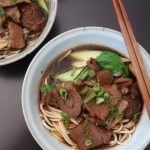

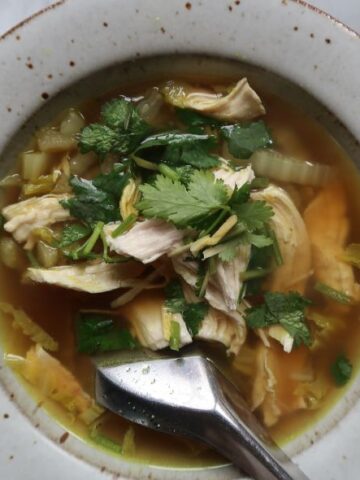

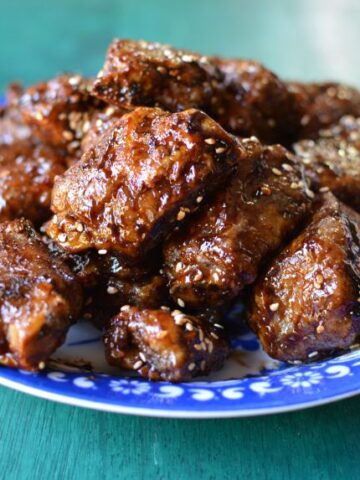
Alex Smith says
One, I love all your cookbooks especially your most recent. So helpful to us living in the land of Kroger and Safeway.
Two, is there a difference between Sesame Oil and Toasted Sesame Oil? Again, I live in Phoenix and my resources are scarce. All the labels say Sesame Oil.
Three, thanks again for all you have done to help us cook!
Andrea Nguyen says
Toasted sesame oil is the darker, more common sesame oil so you're good to go with the stuff at Kroger and Safeway!
In some Asian dishes, untoasted sesame oil is used.
Thank you for cooking from Vietnamese Food Any Day!
Greenwich Pantry says
Amazing! I will also try it
Jessica Cambronero says
This was the first thing I made in my instant pot (aside from a failed tough pot roast) and it came out amazing!! Thank you so much for sharing 🙂
Andrea Nguyen says
Woohooo! Yay!! Glad you took your IP on its maiden voyage with this recipe.
Terri says
Ive been making your Taiwanese spicy beef noodle soup for years now because my family loves it so much!
How different is this recipe from your Taiwanese beef noodle soup? The ingredients are very similar but it looks like you use less water here and omit the light soy sauce. Is this one spicier? Flavorwise, would you say it is very similar?
Thanks
Andrea Nguyen says
It's very similar. The Instant Pot version has less water because there's no evaporation in the pot (the lid is sealed up). In a regular stovetop simmer, the evaporation means you need more water. The IP is fast but I think the stovetop simmer has a little more complexity. I'm the same way with pho made in the IP and on the stove. I love them both for different reasons. Hope you're well, Terri!